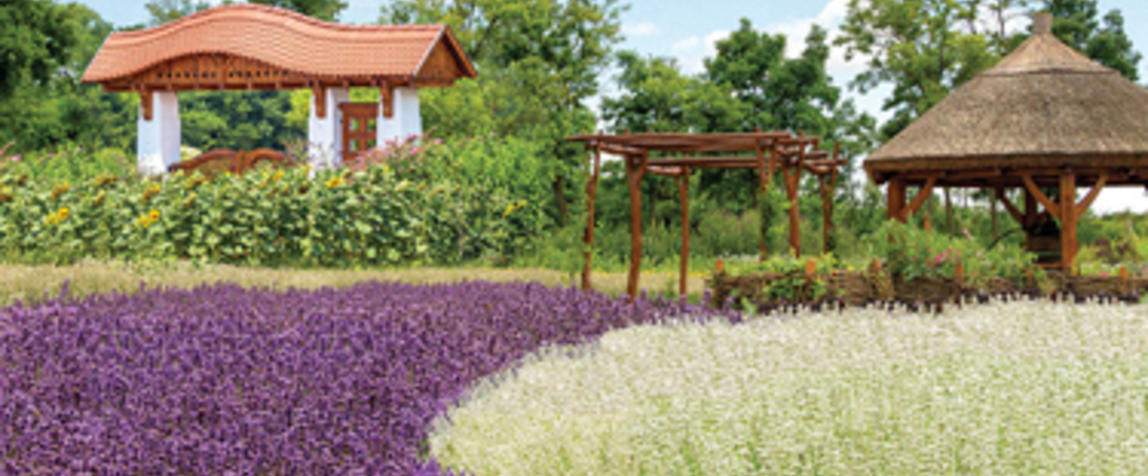You may be familiar with the ‘farm to table’ movement in the restaurant sector – where the restaurant ‘owns’ the entire supply chain of produce. Today, this evolution is being embraced by the natural beauty industry too.
Dubbed ‘farm to face’, the notion is being heralded in with a greater consumer demand for product ingredient transparency. As noted in our ‘Four beauty trends to look out for in 2018’ feature, according to Mintel, locally-sourced ingredients will become a priority for brands, who may also chose to educate consumers on the importance of preserving resources.
Mintel director of global innovation and insight for beauty, Vivienne Rudd, further explained: “In the coming year and beyond, the beauty industry will navigate the conflicting demands of the naturals-hungry consumer with shrinking natural resources and it will be through harnessing biotech advantages that a new generation of enhanced natural products is created.”
To cater to this, companies are endeavouring to ‘own’ the entire supply chain of its products – from seed to serum.
The ultimate aim of ‘farm to face’ is to ensure that every single extract, oil or distillate isn’t tampered with between cultivation and production, as well as to safeguard ingredients from harmful insects and stay GMO-free.
Take Jurlique for example. The brand owns a biodynamic farm nestled in the Adelaide Hills where many of the herbs, flowers and plants (including lavender, rose, marshmallow, liquorice and calendula) are grown for its natural skin care products. Speaking on the practice cultivating its own ingredients, Julique’s website states that its: “...organic farming focuses on natural inputs and methods such as crop rotation, compost and green manure to increase organic matter in the soil and sustainably provide plant nutrition. This method of farming allows us to improve plant health and immunity, and manage pests and diseases without the use of inorganic chemicals.”
Another brand also leading the trend is Olive Oil Skincare. Speaking with BD, co-founder Jo Abignano explained that the brand was, “founded in 2012… after importing a variety of olive trees from Umbria, Italy to the family grove in Hillston, central New South Wales.
“There are 110,000 trees at the grove offering five different varieties of olives. The olives are picked and processed on site at the ‘frantoio’ on the property, where it takes only two hours from picking to pressing, to ensure the optimum quality of the oil.
“Olive Oil Skincare products have always been well received, with people loving the fact that they are all-natural, and 100% Australian made, with the Olive Oil being sourced from the family grove.”
Walgreens Boots Alliance managing director Lyle Tick called out the development of the category last year: “Natural is evolving. People are conscious of what they put in and on their bodies. It doesn’t always have to be 100 percent natural. What they want is total transparency and knowing their products are sourced properly with good ingredients that work.”
Traditionally ‘farm to face’ referred to ingredients sourced locally, but as evidenced by a new slew of brands committing to owning the entire process (including the farms where its ingredients come from) the phrase has taken a more literal turn. Here are five more brands committing to the movement:
Natto
Natto produces Melaleuca Alternifolia, commonly known as tea tree oil, products. Its oil is harvested annually from Natto’s fully mature trees in Queensland during the months of July to September; and once the leaf is harvested, it is transported to Natto’s distillation plant right where the process of dry steam distillation to produce the tea tree oil begins.
Weleda
In the 1920’s in Switzerland Weleda established one of the very first Biodynamic gardens; and today, the natural skincare giant has 135 acres of Biodynamic gardens in Germany, with more in Switzerland, France, the UK, the Netherlands, Argentina, Brazil and New Zealand – collectively growing more than 300 healing plants and flowers.
Dr. Hauschka
Dr. Hauschka grow its own medicinal plants in a medicinal herb garden located directly behind the company building in Eckwälden, an agricultural town in southern Germany at the foot of the Swabian Jura Mountains. The local farmers sold a plot of land with heavy clay soil to company founder Dr. Rudolf Hauschka back in the 1950s, and now the company grows over 150 species of plant on the 4.5 hectare plot.
Farmacy
Farmacy’s hero ingredient, echinacea greenenvy, is cultivated by farmers and Farmacy co-founders Mark Veeder and Robert Beyfuss in upstate New York. The superpower ingredient is then then taken straight to Farmacy production so that it can be cold-pressed and transformed into skincare.
Eminence Organic Skincare
For over 55 years, generations of estheticians for Eminence Organic have created skincare products using the potent, nutritious fruits, herbs and vegetables grown in the Eminence Organic farm – located in Hungary. The farm – now also a tourist destination similar to that of the Jurlique farm – has a similar mission to the brand, and that’s to enhance well-being naturally by growing certified organic ingredients while providing education, healing the earth and honoring its Hungarian roots.




